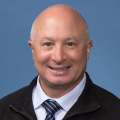Advanced Pediatric Imaging Techniques
Find your care
Our pediatric cardiologists provide world-class care. To learn more about our services, call 310-267-7667.
If you would like to refer a patient to the UCLA Congenital Heart Program for congenital heart surgery or for a discussion of surgical candidacy, please complete this Surgical Referral Form.
At UCLA, the Pediatric Noninvasive Cardiology Laboratory maintains a close collaboration with the Department of Radiology and the Section of Diagnostic Cardiovascular Imaging (DCVI), together providing cutting-edge cardiac MRI and MR angiography, cardiac CT and PET/nuclear imaging for patients with congenital cardiac abnormalities. DCVI is a multidisciplinary program that includes attending radiologists, MR physicists and engineers, basic-science researchers, and clinical and research fellows. The section provides advanced cardiovascular MR and CT services to adult and pediatric patients throughout the UCLA Health Enterprise and oversees training of specialist MR and CT technologists. The program is directed by Dr. J. Paul Finn and staffed by specialized clinical faculty including Drs. Stefan Ruehm, John Moriarty, Ashley Prosper, Arash Bedayat, Cameron Shabani and Pierangelo Renella.
Approximately 500 adult or pediatric congenital cardiac MRI/CT studies are performed per year. State of the art machines are available on the Westwood Campus and at several UCLA sites in the greater LA area. Adult congenital heart disease patients typically undergo MRI and CT with specialized protocols developed in close collaboration with cardiology colleagues in the Ahmanson Adult Congenital Heart Disease Center. Neonates and young children are scanned in the Westwood Hospital Campus, typically under sedation provided by pediatric anesthesiologists with expertise in cardiovascular disease. By using MRI techniques developed at UCLA, together with a specialized MRI dye called Feraheme, it has become possible to produce detailed 4-dimensional images of the beating heart, even in tiny babies with rapid heart rates. These images provide surgeons and cardiologists with unique insights into complex anatomy, physiology and blood flow. Leveraging the fine detail in these scans, rapid 3D printed models of complex cardiac anatomy are generated in house by Dr. Greg Perens, providing point of care, high technology service.
DCVI faculty promptly issue comprehensive reports accompanied by illustrative 3D images and video sequences.
In addition to providing clinical care and teaching, members of the DCVI section conduct world-class research, are funded by the NIH and contribute to technologic advancements in the field. A strong link exists with multiple collaborating research groups both within the US and internationally.



